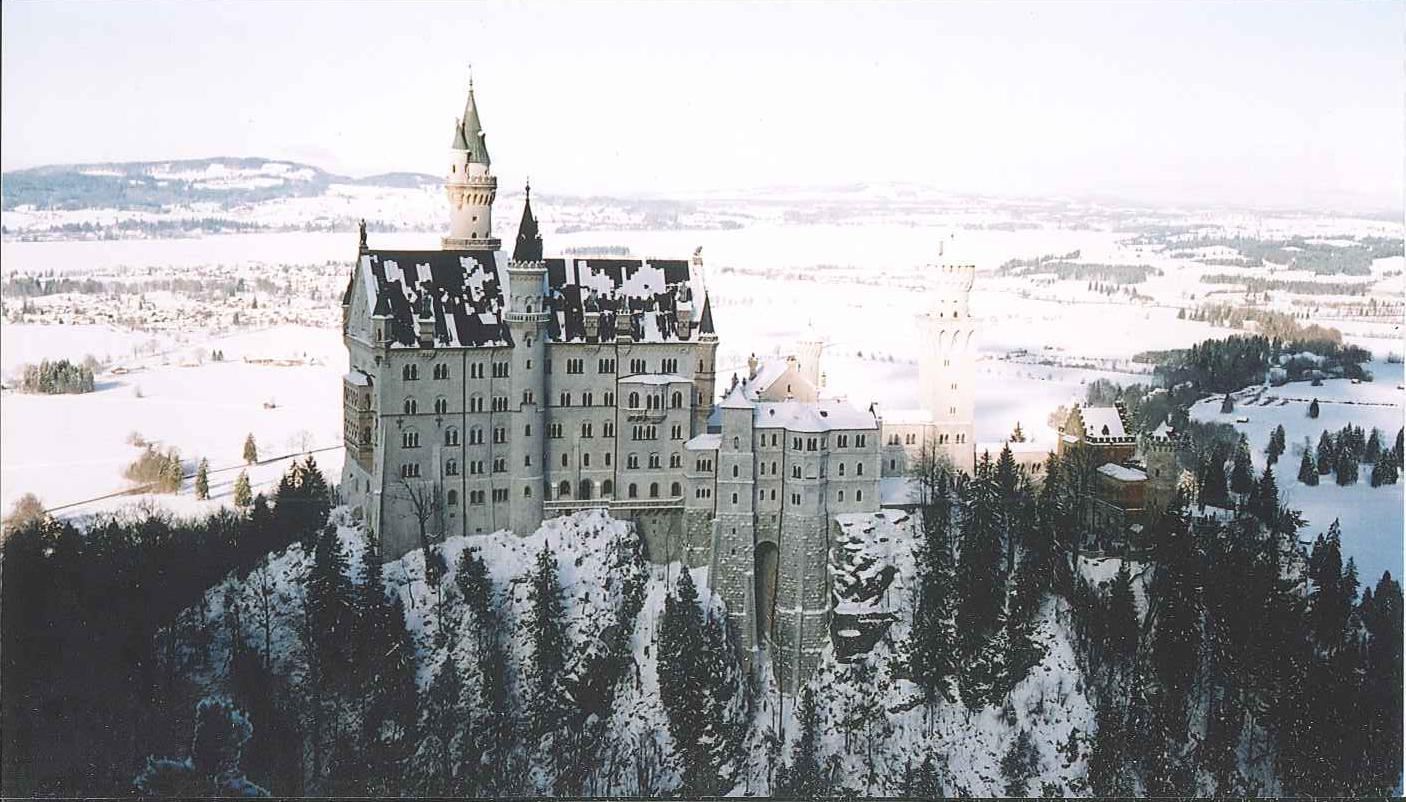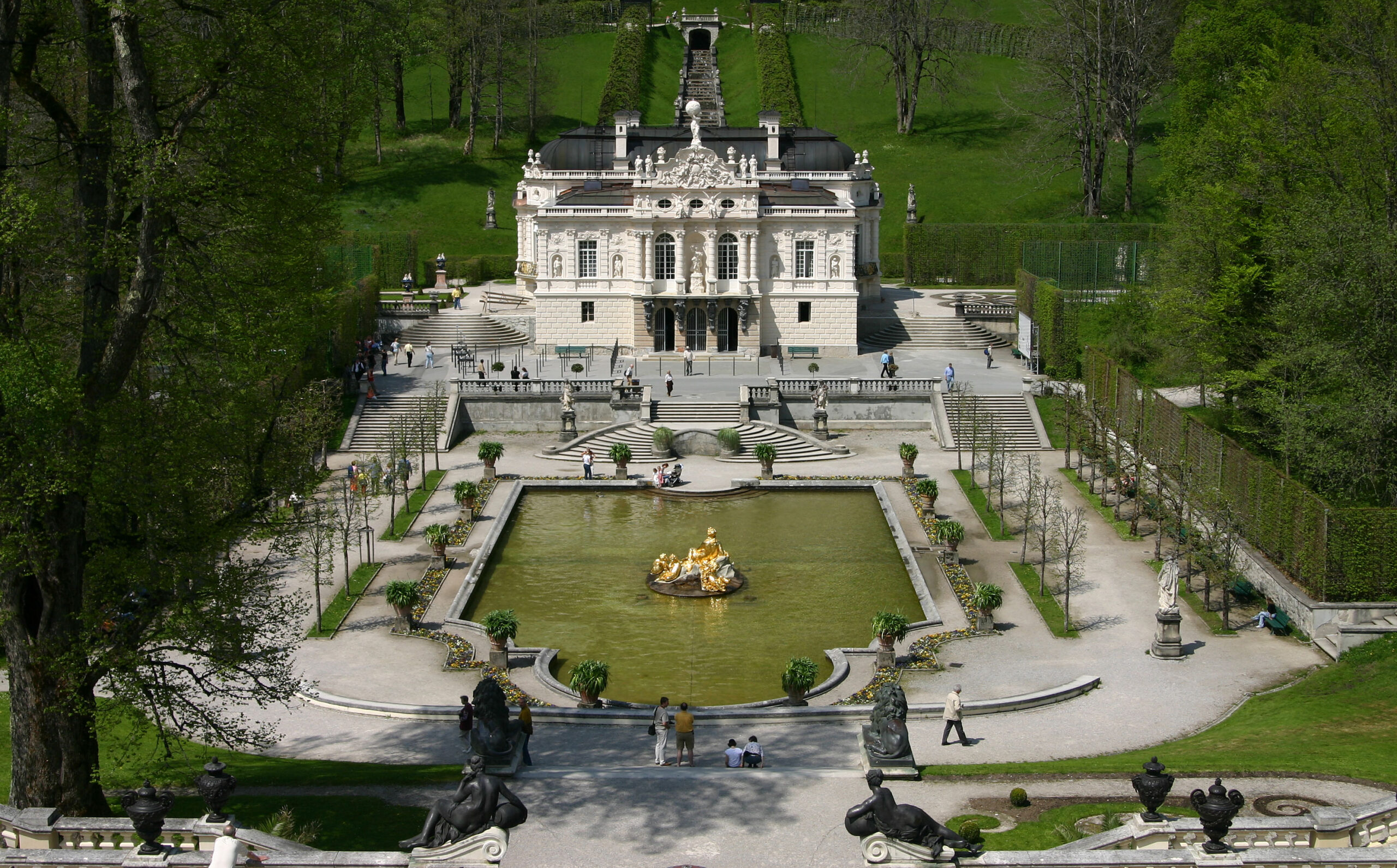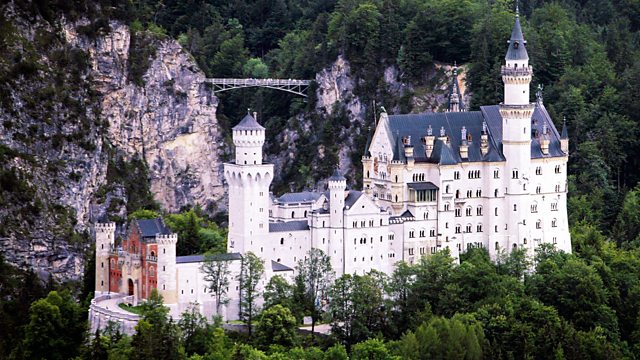Journey with us into a fairytale kingdom where dreams are chiseled in stone and palaces are envisioned as living masterpieces. In the heart of Bavaria, Germany, lived a ruler who had the creativity to spare. King Ludwig II, the “Mad King,” left a legacy so magnificent that it continues to mesmerize tourists from all around the globe. His three best-known palaces, Neuschwanstein, Linderhof, and Herrenchiemsee, are a testament to his luxurious aesthetic that was both extraordinary and iconic. Neuschwanstein’s immaculate setting on a lofty mountain outcropping and its exotic towers are the ones that inspired Sleeping Beauty’s iconic castle at Disneyland.
Linderhof, which was surrounded by rich gardens and garnished with complex features, was King Ludwig’s personal hideaway. Herrenchiemsee, a vast island wdbos palace modeled after Versailles, was an over-the-top show of his affection for the fine life. Going to any of the palaces is akin to stepping into a fantasy world where grace and debauchery meld to create an eldritch atmosphere of grandiosity. From the buildings’ stunning exteriors to their elaborate interiors, every corner says a passionate tale of dreams made concrete in rock. Allow us to take you on a tour of King Ludwig II’s palace marvels and revel in Bavaria’s royal wonderland.

Neuschwanstein Castle – A fairy tale in stone
Neuschwanstein Castle is an architectural marvel that perches atop a verdant hill overlooking the Bavarian countryside. Constructed in the 19 th century, it was personally designed for his majesty King Ludwig II as a hideaway and a nod to the medieval romanticism he admired. With turrets that pierced the bright blue sky, intricately adorned balconies, and stunning views, Neuschwanstein is a sight to behold.
Neuschwanstein Castle is one of the world’s most well-known castles owing to its storybook allure. However, the inside is much more ornate than the outside. The castle’s heart-stopping opulence has visitors in awe as they walk through the thresholds of the castle. The interior is adorned with ornate woodcarvings, frescos, and luxurious furniture lovingly crafted to fulfill the king’s romantic aspirations.
The show-stopper is the Throne Room, a spacious hall encrusted with gold leaves and gems influenced by Byzantine and Romanesque architecture. Ludwig envisaged himself being the ruler of an empire seated on the intricately ornamented throne , but he never arrived at his throne.
Visiting the Neuschwanstein Castle allows people a glimpse into the King’s thoughts. Visitors who tour through the sumptuous spaces of Neuschwanstein Castle and gaze at the breathtaking views easily imagine the inspiration for Walt Disney’s Sleeping Beauty Castle. Neuschwanstein Castle, with six hundred grand rooms, lets tourists experience a lovely fairytale.
Linderhof Palace – A miniature Versailles in the Bavarian Alps
Tucked away from view in the Bavarian Alps, one might discover Linderhof Palace, a small architectural gem inspired by the grandeur of Versailles. Linderhof was constructed as a private palace for King Ludwig II, and it was the monarch’s only estate built while he was alive. The gardens, exquisite fountains, and carefully constructed cantilevered ceilings all add up to give it a true significance to Bavarian architectural style.
Furthermore, the Hall of Mirrors at Linderhof is magnificent, being entirely surrounded by mirrors, gilding ornaments, and crystal chandeliers. This room is a testament to Ludwig’s admiration for French Baroque style . The palace feels like a world of luxury and demands one’s attention until one loses it. Furthermore, the palace garden is as fabulous as the palace itself, modeled after Versailles’ garden paradise.
At the time, there were deliciously cut lawns, rich flower beds, and water fountains with one’s dreamlike Venus Grotto, characterized by stalactites with a vivid iridescent greenery lining, and a pool of glittering light blue water. The Venu grotto was one of the king’s haunts, where he would have music played while indulging his penchant for art. Linderhof palace is a place for the curious, conservatory, and artist in Ludwig. It was something Ludwig cooked up from the palace’s humdrum lifestyle or regular crowd. This fascinating transformation is what makes Linderhof worth exploring when examining palaces in Bavaria.

Herrenchiemsee Palace – A majestic retreat on an island
Situated on an island in Lake Chiemsee, Herrenchiemsee Palace is a testament to King Ludwig II’s extravagant taste and desire to recreate the grandeur of Versailles. Modeled after the Palace of Versailles in France, it was intended to be Ludwig’s “Temple of Fame,” a place where he could escape from the pressures of everyday life and indulge in his love for art and beauty.
The palace’s grandeur is evident from the moment you set foot on the island. Its striking façade, adorned with elaborate sculptures and ornate details, is a sight to behold. As you step inside, you are greeted by the stunning Hall of Mirrors, a faithful reproduction of its counterpart in Versailles. The room is filled with natural light, reflecting off the mirrors and creating a sense of infinite space.
Beyond the Hall of Mirrors, the palace is filled with opulent rooms, each more extravagant than the last. The King’s Bedroom, with its richly decorated canopy bed and lavish furnishings, is a testament to Ludwig’s indulgent lifestyle. The State Dining Room, adorned with gold leaf and crystal chandeliers, is where the king hosted elaborate banquets and entertained guests.
The palace’s gardens are equally as impressive as its interior. Modeled after the gardens of Versailles, they feature manicured lawns, grand fountains, and meticulously planned flowerbeds. The most iconic feature of the gardens is the Great Fountain, a magnificent water display that is synchronized to classical music. It’s a truly mesmerizing sight and a testament to Ludwig’s passion for creating immersive experiences.
A visit to Herrenchiemsee Palace is an opportunity to step into the shoes of King Ludwig II and experience his vision of grandeur. The palace’s stunning architecture, lavish interiors, and picturesque setting make it a true hidden gem in the Bavarian countryside.
The architectural style and influences of King Ludwig II’s palaces
King Ludwig II’s palaces are famous for their architectural style and the inspiration that was drawn from different eras. Neuschwanstein Castle, for example, is one of the most well-known Romanesque Revival buildings that look like it was taken directly from a fairy tale. Its tall towers, pointed arches, and sophisticated balconies resemble a medieval fortress, whereas inner designs represent Ludwig’s interest in the Middle Ages . Linderhof Palace demonstrates King’s affection for the French Baroque era. The elaborated decoration of both rooms and mirrors, as well as the garden, makes references to the luxury of Versailles.
Ludwig’s love for everything French comes in every aspect of this masterpiece. Herrenchiemsee Palace was designed based on the Palace of Versailles which signifies the obsession King had for the French royal family. The main gates, sculptures to the entrance, and the garden repeat the style of Louis XIV. This palace was made by Ludwig as a private residence, a masterpiece to compete with Versifilles in places of luxury and beauty, and thus it is.
Summing up, King Ludwig II’s palaces do not only show his love for history but also reveal his personal preferences and taste. It is not an ordinary replica but rather a unique blend of different styles and experiences.
The life and legacy of King Ludwig II
King Ludwig II, known as the “Mad King,” lived a life full of mystery and tragedy. He was born in 1845 and became the king at the young age of 18 after the sudden death of his father. To a great extent, Ludwig’s life was determined by his love for art, music, and literature, which later influenced his architectural choices. His reign as a king was characterized by his reclusive personality and an unusual manner of spending.
In fact, he spent most of his time in one of the opulent palaces that he had built, completely losing touch with reality. Despite this, irrespective of Edward and Crewe’s , the king’s passion for beauty and the immersive experience continue to impress millions of people who come to see the castles he left behind. Thus, the king’s legacy is, first and foremost, sensory, and the palaces a living embodiment of the world that he aspired to create.

Visiting the palaces – Tips for planning your trip
Visiting the palaces of King Ludwig II is an experience that you will never forget. However, to ensure that you enjoy your trip to the fullest, you need to plan your visit carefully. The following tips will help you maximize your visit: Book tickets well in advance. The palaces are very popular, and tickets are often sold out, particularly during the peak season for tourists. Arrive early in the morning to explore the palaces at your own pace.
The middle of the day is the busiest time, so it is best to come as early as possible. Take a guided tour with a local expert. Guided tours are available in all three palaces and provide a lot of useful information about the history and architecture of each building. Give yourself extra time . Each of the three palaces has its unique features and attractions, so make sure you have enough time to truly enjoy every place. Explore the alternative sites .
The palaces are located in a very picturesque area with many beautiful towns and landscapes. Visit as many attractions as possible to enjoy the beauty of the Bavarian countryside. Follow these tips, and your visit to King Ludwig II’s palaces will become one of the most memorable experiences in your life.
Interesting facts and trivia about King Ludwig II and his palaces
Neuschwanstein Castle was never completed in Ludwig’s lifetime. Construction began in 1869 and was terminated in 1886. Shortly after King Ludwig’s untimely death, the castle was opened to the public . It has since become one of the most popular tourist destinations in Germany. Linderhof Palace, which is the smallest of Ludwig’s palaces, is still one of the most beautiful. The tiny palace has beautiful, intricate interiors that visitors can get up close and personal with.
Ludwig adored the Venus Grotto at Linderhof Palace and frequently visited the location to listen to music and satiate his love of the arts. Herrenchiemsee Palace was King Ludwig’s most ambitious conquest. The King had intended for this castle to be a reproduction of Versailles . However, just a fraction of the original castle was completed until the King’s death. The Herrenchiemsee Palace is without a doubt one of the most impressive royal palaces in the world. King Ludwig began having financial problems as a result of his expensive palaces. The Bavarian monarchy was also strained, and Ludwig was forced out of power one year before his unexplained death in 1886 after being declared mentally unfit.
The impact of King Ludwig II’s palaces on tourism in Bavaria
The palaces of King Ludwig II have had a profound impact on tourism in Bavaria. They attract millions of visitors each year, contributing significantly to the region’s economy and cultural heritage. The popularity of the palaces has led to the development of infrastructure and services to accommodate tourists, such as hotels, restaurants, and transportation options.
The palaces have also put Bavaria on the map as a must-visit destination for travelers seeking a unique and immersive cultural experience. Their stunning architecture, rich history, and picturesque surroundings make them a magnet for tourists from all over the world. The palaces have become symbols of Bavaria’s royal heritage and continue to draw visitors who are captivated by their beauty and the stories they tell.
The enduring allure of King Ludwig II’s dream palaces
In the heart of Bavaria, the dream palaces of King Ludwig II stand as testaments to his opulent and visionary aesthetic. Neuschwanstein, Linderhof, and Herrenchiemsee captivate visitors with their stunning architecture, lavish interiors, and picturesque settings. Each palace tells a story of dreams brought to life in stone, offering a glimpse into the mind of a king whose imagination knew no bounds.
Visiting these palaces is like stepping into a fairy tale, where beauty and decadence merge to create an otherworldly experience. From the breathtaking views of Neuschwanstein to the opulent interiors of Linderhof and the grandeur of Herrenchiemsee, each palace offers a unique and immersive journey into the world of King Ludwig II.
If you’ve enjoyed exploring this realm of opulence and fantasy, we invite you to discover more intriguing narratives in our article exploring the dynamic landscapes of Iran and Israel. Expand your horizons and delve into the realms of both ancient history and modern geopolitics. Happy reading, and may your adventures be as enriching as they are unforgettable.

